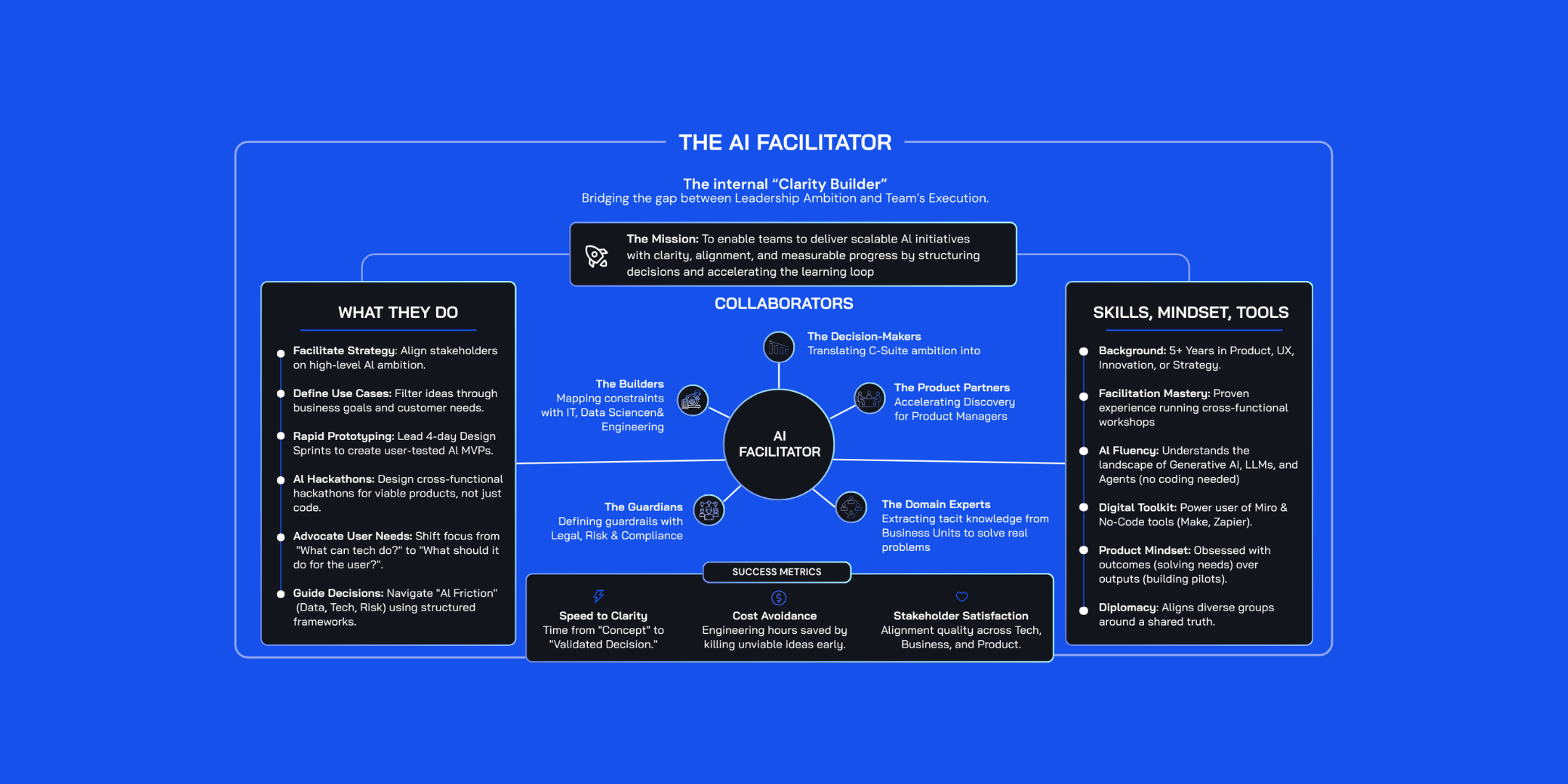How Product Managers Can Guide Stakeholders to Better Decisions on Messy Problems - with Cynefin

As Product Managers, you often find yourselves at the intersection of different challenges—balancing customer needs, business goals, and technical constraints. It’s your job to prioritize and select the most promising opportunities to deliver value, both for the business and the customer.
But as challenging as that may sound, it would be much easier if you were the one making all the decisions. However, we know that’s rarely the case. Most decisions, even the smaller ones, often depend on the "dreaded stakeholders."
That can be frustrating, especially when you see them making decisions that seemingly don’t make sense in the context of the problem you are trying to solve. In these instances, it’s easy to label stakeholders as difficult, see them as enemies, and get into an ‘antagonistic’ relationship with them. This makes your interactions with stakeholders feel more like a battle, in which they will always have the upper hand due to the authority (decision-making power) they have.
But it’s not all that bad. The first thing to recognize is that you and the stakeholders actually share a common goal: the success of your product. Yes, you might have different ideas about how to get there, and that’s perfectly normal. If this is the starting point, you’ll need to win them over, help them see new perspectives, and influence their decision-making to align more with your recommended course of action.
To do this, you need to understand how they make decisions. Too often, stakeholders rely on leadership strategies that have worked for them in the past but may no longer be effective in new or evolving contexts. Their decision-making is based on experience, past successes, and familiar environments. In an ideal world this approach will work nine out of ten times—it’s logical. But as the context shifts, decision-making cannot be one-size-fits-all. Leaders need to adapt to the situation at hand.
This is where you, the Product Manager, can step in. You are the closest to the problem, immersed in data, and most familiar with the current context. If you aren’t, then you also need to step back and reassess the situation to make better decisions moving forward.
The tool that can help you (and them) do this is the Cynefin framework.
Cynefin (pronounced ku-nev-in) is a Welsh word that represents the many factors in our environment and experiences that influence us in ways we may not fully understand.
The Cynefin framework helps categorize problems into five distinct contexts based on the relationship between cause and effect. Four of these—Obvious, Complicated, Complex, and Chaotic—require leaders to understand the situation and respond appropriately. The fifth domain, Disorder, applies when it’s unclear which of the other four contexts dominates.
By using the Cynefin framework, both you and your stakeholders can better understand which type of problem you’re dealing with. This understanding allows everyone to make better decisions, avoiding the pitfalls that occur when applying the wrong management style to the situation.
As the Product Manager, you can use this framework to guide your stakeholders toward more effective decision-making, helping them (and yourself) adapt strategies to the complexity of the problem at hand. In doing so, you position yourself not only as the person closest to the problem but also as a key facilitator of smarter, context-driven decisions.

The 4 Domains of Cynefin
Obvious (Known Knowns)
Definition: In simple contexts, the relationship between cause and effect is evident. These are problems with clear, straightforward solutions. You know exactly what to do because you’ve seen them before, and the solution is obvious and undisputed. Decisions in this domain are rarely questioned because everyone shares a common understanding of the issue.
Solution approach: Sense the problem, categorize it, and respond. his means assessing the facts, determining the type of problem, and then applying a known best practice to resolve it.
Example: Imagine receiving a customer complaint about a broken feature that you’ve fixed before. This is an “Obvious” problem, so you apply the familiar solution and move on.
Potential pitfalls. However, even in this domain of simple problems, things can get tricky. There’s a risk of oversimplifying more complex issues and wrongly categorizing them as "Obvious." We all fall prey to entrenched thinking sometimes, and stakeholders are no exception. They will fall back on familiar solutions, relying too heavily on past experiences and successes, blinded to new ways of thinking. Additionally, complacency can creep in when everything seems to be going smoothly (e.g., your product is performing well, users are happy). If the context shifts, stakeholders might miss the warning signs and react too late—leaving your product vulnerable to disruption by an innovative competitor.
Complicated (Known Unknowns)
Definition: In complicated contexts, there’s a problem, but the answer isn’t immediately clear. These problems often have multiple possible solutions. The relationship between cause and effect is there, but not obvious. Think of driving your car on the highway when smoke starts coming out of the hood. You know something is wrong with the engine, but you’re not sure exactly what it is. You’ll need to take it to a mechanic to diagnose the problem.
In these cases, solving the problem requires a different approach than in simple contexts—it demands expertise. After sensing the problem, you can’t simply categorize it and apply best practice. Instead, you need to analyze the situation with the help of experts.
Solution approach: Sense the problem, analyze the situation, and respond using expert knowledge.
Example: Suppose you’re building a new feature and need to integrate with a third-party API you’re unfamiliar with. It’s not an easy problem, but with research or expert help, you can figure out the best approach.
Potential pitfalls. As with simple contexts, entrenched thinking can create challenges. However, in this case, it’s the experts who may get stuck in their ways. It took years for them to build their expertise, and they may not be open to innovative ideas coming from non-experts. That’s why you and your stakeholders must carefully balance expert advice with fresh perspectives from others.
Another potential issue is “analysis paralysis”, where a group of experts gets stuck in a deadlock because they can’t agree on a solution—especially when multiple valid solutions exist.
In complicated problems, it’s often difficult to make a decision because of the trade-off between choosing the “right” answer and simply moving forward with a decision to keep momentum.
In complicated problems, it’s often difficult to make a decision because of the trade-off between choosing the “right” answer and simply moving forward with a decision to keep momentum.
But when finding the right answer becomes difficult and decisions must be made with incomplete information — which is often the case — you are likely dealing with a complex situation rather than a complicated one.
Complex (Unknown Unknowns)
Definition: This is where things get tricky. You’re dealing with problems where the cause and effect are unclear. Actually this is only visible in hindsight. The good news is that at least one right answer exists. The not-so-good news? Most problems in business and organizations tend to fall into this space.
Here, previous approaches don’t work. You can’t rely on best practices or known solutions because the root cause of the problem isn’t clear. Nor can you fully analyze the issue upfront with experts, as it continuously evolves. That’s why, instead of imposing a solution, the best approach is to let the answer reveal itself through experiments that are safe to fail.
Approach: Probe, sense, and then respond. This means running experiments, observing what works and what doesn’t, and using that information to decide on the best course of action.
Example: Think about launching a new product in an uncertain market. You don’t know exactly how customers will react or what features will resonate. Here, you’ll need to test, gather feedback, and iterate based on what you learn.
Potential pitfalls. When faced with complex problems, stakeholders are often tempted to fall back on traditional command-and-control management styles, expecting fail-safe solutions with clear, defined outcomes. This, however, isn’t possible in the complex domain, which requires a more experimental and iterative approach. The approach can test the patience of stakeholders, as they do not see immediately the results they want. However, those who are patient and can spot emerging patterns and opportunities from experiments are more likely to find the winning solution.
Chaotic (Unknowable Unknowns)
Definition: In this domain, you’re in crisis mode. There’s no clear pattern or path forward, and you need to act quickly to regain control.
Solution approach: Act, sense, and respond. You need to act immediately to stabilize the situation. Once things are under control, assess what happened, understand why, and then respond to prevent it from happening again.
Example: Imagine a critical outage on your platform during a major sales event. You can’t afford to analyze first—you need to act, stabilize, and then figure out what went wrong later.
Potential pitfalls. Some leaders build their reputation on solving major crises within their organizations, earning them an aura of infallibility. These leaders may resist seeing information that contradicts their opinions. However, their success in crisis mode doesn’t always translate to success when the context shifts.
Yet, problems in this domain can also spark innovation. While managing the crisis, keep an eye out for opportunities to approach things differently—not just to avoid future crises, but to discover better solutions.
Disorder
Disorder occurs when stakeholders aren’t sure which domain applies to the problem at hand, and they struggle to adapt their management style to address it effectively. This often leads to treating all problems the same, regardless of their nature. For instance, a manager accustomed to bureaucratic, process-driven environments may try to solve every problem by adding more process and structure. A knowledge-driven stakeholder might throw more expertise and resources at an issue, even when simpler solutions exist. An authoritarian leader could impose their opinions, ignoring other perspectives because their past success has made them overconfident. Similarly, an innovator may push for unnecessary experimentation when an expert could resolve the issue more efficiently.
Why Does This Matter to You as a Product Manager?
One of the biggest challenges in product discovery is identifying what problem to solve and how to approach it. If your stakeholders don’t understand the nature of the problem, you might be forced down the wrong path.
The Cynefin framework helps you avoid this pitfall by selecting the right approach for each problem while bringing your stakeholders along for the journey.
As a Product Manager, you will likely encounter problems in all four domains:
- In the Simple domain, resist the urge to reinvent the wheel. Leverage existing solutions and best practices, and move forward quickly.
- In the Complicated domain, the problem has clear objectives, but finding the right solution requires expert knowledge. Here, you’ll need to motivate your team (designers, researchers, engineers), foster collaboration, and make quick decisions on the best approach.
- In the Complex domain, you’re exploring uncharted territory. You’ll need to engage with stakeholders, run experiments, and iteratively gather insights before moving toward a solution.
- In the Chaotic domain, you’ll be managing crises—something that will inevitably happen at some point. Turn these crises into opportunities for innovation and new ways of doing things.
Resource: https://hbr.org/2007/11/a-leaders-framework-for-decision-making



.jpg)





